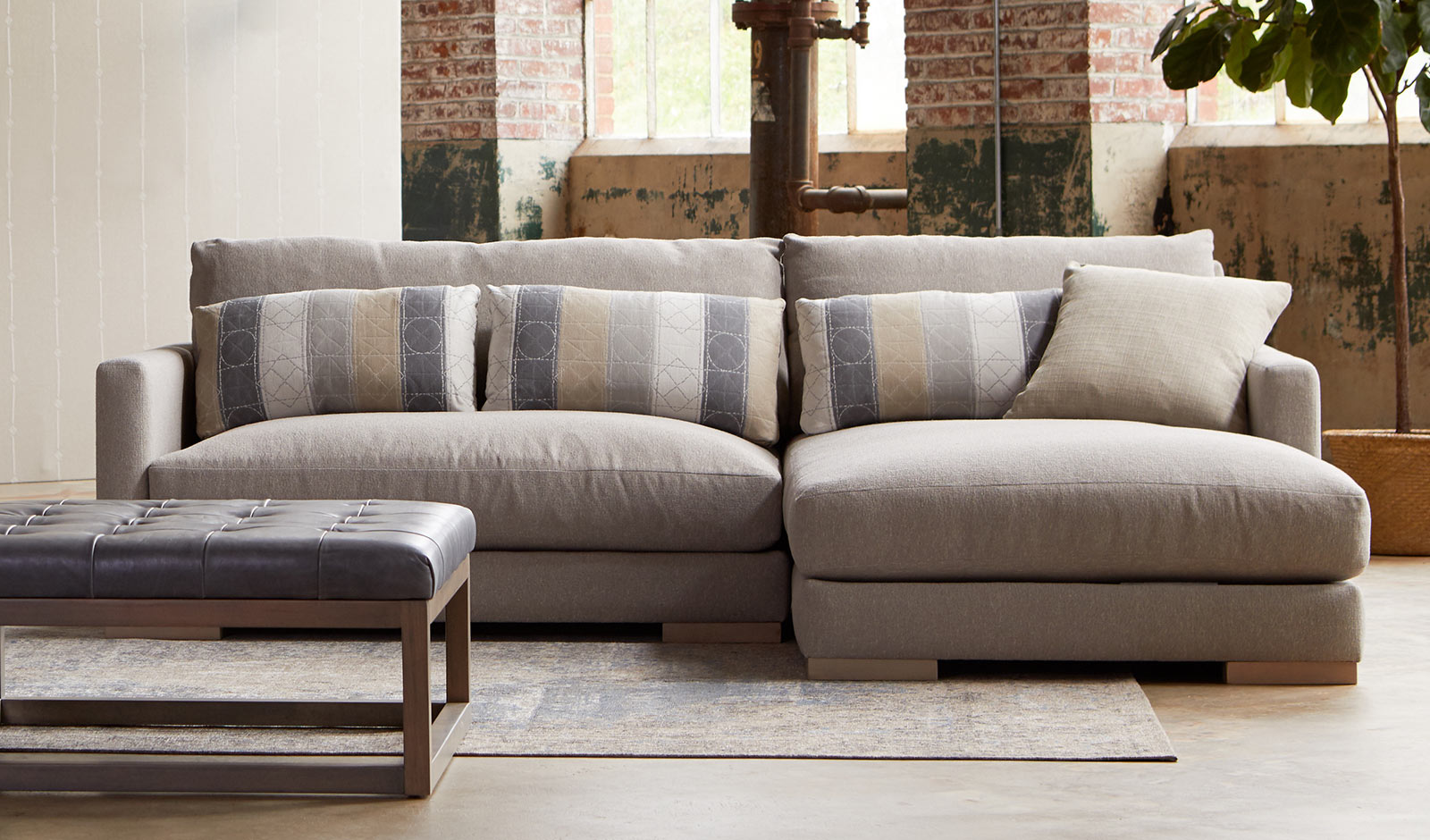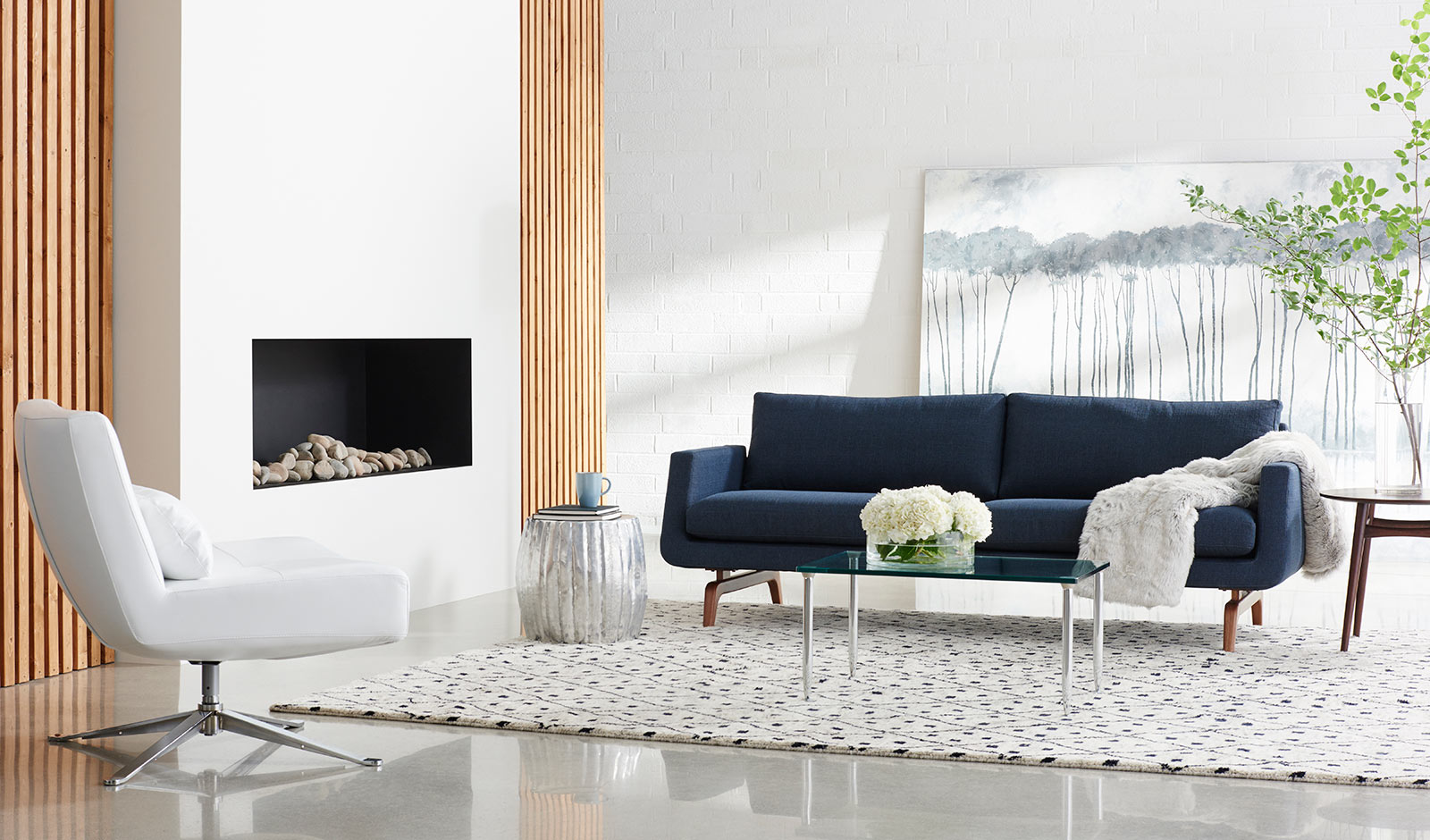Our furniture care series is back, and we’re focused on fabric! Here at Fairhaven Furniture, we’ve been helping our customers in the New Haven area find the perfect fabric upholstery for their homes for over 40 years. And with the huge array of colors, textures and patterns that are available, there’s truly a fabric for every taste.
Once you’ve found your perfect piece, you need to understand your fabric to keep it looking its best for years to come. Fabrics vary widely – some are durable and easy to care for, others are much more delicate. Before committing to an upholstery, ask our team about the fabrics you’re considering. We’re happy to explain their different properties, helping you choose the best fit for your home and lifestyle.
Day-to-Day Maintenance
First off, vacuuming your fabric upholstery regularly will prolong its life and minimize the need for deeper cleaning. Vacuum both the surface and in the crevices with appropriate attachments. If you wish, you can brush the fabric before vacuuming to help loosen dirt. Just be gentle – too vigorous brushing can snag textured fabrics or cause pilling on smooth ones.
Deeper Cleaning
Your furniture is meant to be lived on and enjoyed – and spills and stains are a part of life! When accidents happen, there’s no need to panic. You just need to know the right cleaning technique for your furniture, which starts with the cleaning code.
Look for the label on your upholstered furniture – it should include one- or two-letter code: W, S, WS or D. This fabric care code lets you know what type of cleaner is right for your piece.
W means that water and water-based cleaners are safe for your fabric. Fabrics with a W code are often synthetics like polyester or nylon.
For a minor spot, water may be all you need – we recommend using distilled water, since the minerals in tap water can discolor fabric. If you need more cleaning power, use a water-based upholstery shampoo or a foam-based cleaner.
Although these fabrics can handle water, a little goes a long way. Don’t oversaturate the stain, and don’t be tempted to toss your cushion covers into the washing machine! When using a shampoo, mix the product with water and stir to create foam. Apply the foam to the stain, then blot with a clean, white cloth – you’ll get all the cleaning power with much less moisture.
S indicates that you should clean your fabric with a solvent-based cleaner. S code fabrics are often natural materials like linen, wool or silk. Water should never be used on these fabrics, as it could shrink the fabric or leave a permanent ring.
Start by testing your solvent in a small, hidden area to make sure it doesn’t damage your fabric. If the test goes well, apply solvent to the stain with a clean, white cloth. Switching to a new section of the cloth, blot to remove the stain. Repeat as needed, then allow the area to dry completely.
Solvents are strong chemicals and should only be used in a well-ventilated area. Keep the kids and pets away while you’re cleaning and avoid carbon tetrachloride products entirely – they’re highly toxic.
WS means that your fabric can be cleaned with either water- or solvent-based cleaners, or a combination of the two. A spot test in a hidden area is a wise choice with these fabrics – you want to make sure your fabric reacts well to a particular cleaner before applying it more broadly. Once you’ve selected a cleaner, treat the stain using the appropriate cleaning technique for the product.
D or DRY indicates your fabric is dry clean only. When it needs to be cleaned, call in the pros.
General Pointers for Fabric Care
Treat stains quickly. The longer you leave a stain to set into fabric, the harder it will be to remove. This is the time for a rapid response!
Watch out for color transfer. Always use a clean, white cloth when cleaning your upholstery. Dyed cloths can transfer color to fabric, making a stain situation worse.
Blot, don’t rub. Whether you’re using a water-based cleaner or a solvent, always blot the stain rather than scrubbing at it. Rubbing the surface of the fabric can cause it to pill.
Speed up your drying time. Fabric upholstery does not like to be wet. Use a fan or a hair dryer on the cool setting to help newly cleaned areas dry faster.
Know when to call for reinforcements. Large spills, delicate fabrics, anything dry clean only – these situations are best handled by professional cleaners. Spending a few hundred dollars to save a piece that cost several thousand can be a wise investment.
We hope these tips are helpful in caring for and extending the life of your furniture. But if enough is enough, and it’s time to replace that old, stained sofa or armchair – come visit us! Our designers would love to take you through our showroom and help you find your perfect piece. And now that you know how to look after it, we’re confident that it will bring you joy for years to come. Thanks for reading!


